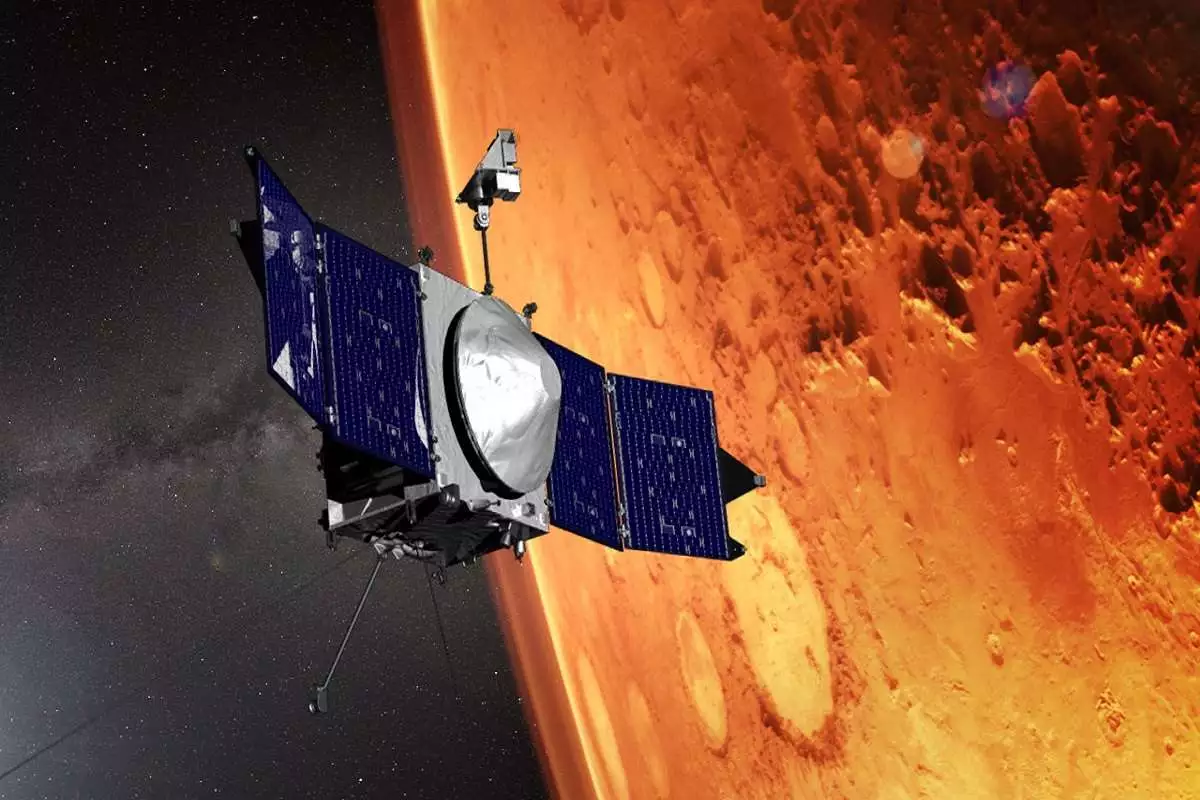
NASA's MAVEN Spacecraft
NASA – National Aeronautics Space Administration released pictures of Mars clicked by MAVEN (Mars Atmosphere and Volatile Evolution). The images are mind-blowing and immensely beautiful. The pictures feature the red planet in a completely different light giving the scientists a better insight. When the spacecraft made an orbit around the sun, these images were taken from various locations. The picture features several craters, Valles Mariners, and white clouds.
NASA shared the pictures to the world
NASA, through its official Instagram handle, shared the images of the red planet. The post described the timing of the pictures taken. Further, the post described both the images in depth. The post said, “Our MAVEN (Mars Atmosphere and Volatile EvolutioN) mission got some stunning tie-dye views of Mars in these two ultraviolet images. MAVEN took the first image in July 2022 during the southern hemisphere’s summer season, which occurs when Mars passes closest to the Sun. The second image is of Mars’ northern hemisphere and was taken in January 2023 after Mars had passed the farthest point in its orbit from the Sun….”
View this post on Instagram
Also Read: “Pretty Awesome Achievement” Of NASA: Recycling 98% Of Pee, Sweat To Turn It Into Drinkable Water
What is MAVEN
NASA’s MAVEN, which was launched in November 2013. It entered orbit around Mars in September 2014, is on a mission to learn more about the planet’s atmospheric conditions. According to NASA, these global images of Mars were taken by MAVEN’s Imaging Ultraviolet Spectrograph (IUVS) instrument in 2022 and 2023, when the planet was close to the opposing ends of its elliptical orbit.
Outside of the visible spectrum, the IUVS sensed wavelengths between 110 and 340 nanometers. As a result, different brightness levels are used to make them clearly apparent to the human eye. According to a recent NASA press release, this causes the air zones to seem purple, white clouds to appear white or blue, and the surface to appear tan or green. The hope among scientists is that this will yield fresh information that will help them better comprehend Mars’ past.
To read more such news, download Bharat Express news apps


















